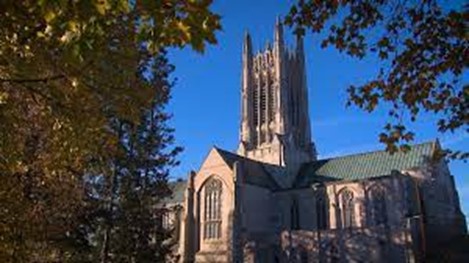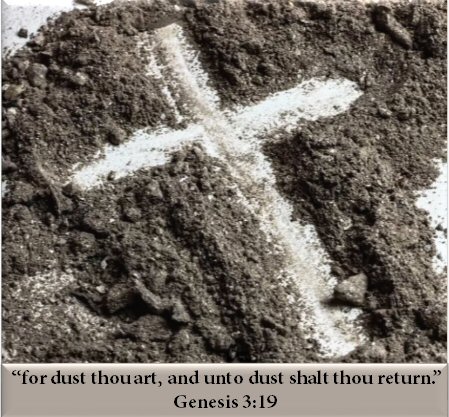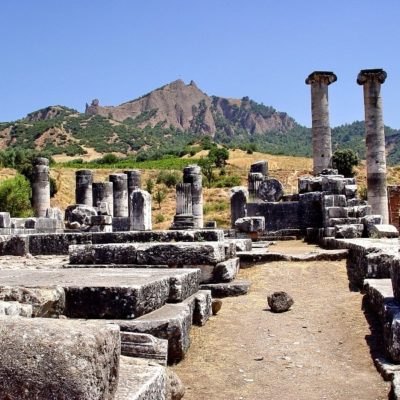Catholic Church

The Roman Catholic Church is also referred to as The Catholic Church. The term Catholic comes from the Greek meaning Universal. They are governed by the Bishop of Rome or the Pope. The Bishop of Rome, the Pope, has supreme authority. The Roman Catholic Church regards itself as the only rightful inheritor of the Church since it was placed upon Peter by Jesus.
The Pope is the Catholic bishop and patriarch of Rome, the head of the Roman Catholic Church and the Eastern Catholic Churches. The role of Pope is a spiritual role as well as being the independent head of the sovereign State of the Vatican City of Rome. The pope is assisted in his administration of the church by a complicated bureaucracy known as the Curia. The Curia is located in Vatican City. It is directed by the Secretariat of State.
The Pope has final authority in all matters and is considered to be infallible. It is the Pope who appoints and transfers the Bishops to the different dioceses.
It was Pope Paul the VI who instituted the Synod of Bishops in 1965. The Synod of Bishops is a representative body of bishops who may be called upon by the Pope for consultation on major issues. The Synod of Bishops is not the same as the Ecumenical Councils, which is the convocation of all the Bishops of the world.
The Roman Catholic Church is organized into dioceses all headed by a bishop. The most important church in a diocese is the cathedral. This is where the bishop has power over the worship and ceremonies. The bishop’s chair or throne is located in the cathedral and the bishop preaches to the congregation.
A Bishop is the principal liturgical dignitary and is distinguished from the priest by the power of the Holy Orders. A Bishop has the right to admit priests to his diocese and to exclude them from his ministry. The bishop assigns his priests to parishes and gives them their duties. A Bishop delegates administrative duties to his Vicar General, Chancellors, and any other officials under him.
The Clergy is under the Bishop for both secular and religious affairs. The Secular Clergy are not usually members of the religious orders or congregations. The Secular Clergy have been permanently been incardinated into the diocese under the authority of the local bishop. They usually staff the parishes of the dioceses and serve as Pastors in the parishes.
The religious clergy are committed to their congregations. They work within a given diocese and must adhere to the decisions of the Bishop in public worship. Religious clergy and laity staff the schools, hospitals and any other social service in the diocese. Nuns and Brothers are members of congregations, but are not religious clergy.
Cardinals are the highest dignitaries in the Roman Catholic Church after the Pope. The Cardinals are appointed by the pope. The cardinals represent the Supreme Council of churches, colleges, and on the death of the pope they are the one who elect his successor. Most cardinals are Bishops of dioceses. The Sacred Congregation of Cardinals is made up of 70 members; six Cardinal Bishops, fifty Cardinal Priests, and fourteen Cardinal Deacons.
History
The Roman Catholic Church claims they date back from the moment that Jesus Christ appointed the Apostle Peter as the guardian of the keys of heaven and earth as the Chief of all the Apostles. They claim Peter as the first Pope. They claim they have worldly authority and power because they believe they are the only body that is strong enough to rule after the fall of Rome in 410. The Roman Catholic Church believes without the Church, anarchy would run rampage.
The word Catholic means universal. Catholic was first mentioned by Ignatius A.D. 110-15. Augustine influenced the theological and philosophical structure. It was Augustine who defended and gave the Papacy justification.
Historically, the Crusades were a series of military campaigns sanctioned by the Pope during 1096 to 1291. The hope of the Crusades was to capture the Holy Land from the Muslims. The Crusades began to ensure the safety of the pilgrims that were visiting the Holy Sepulchre Church in Jerusalem, and to establish Christian rule in Palestine. Some charge that the Crusades were for the establishment of wealth and power for the Catholic Church, and question the official explanations of providing protection for the pilgrims. These Crusades lasted almost two hundred years. They included most of the Middle East, with attacks directed against Egypt and Constantinople.
There were several crusades mounted against the Ottoman Turks to stop them from controlling the eastern borders of Europe. Several Popes preached about the need for a united Christian Holy war against the infidels. Pope Pius II failed to raise a crusade for the recovery of the fallen Constantinople and the Byzantine Empire, so Constantinople and the Byzantine Empire fell in 1453.
Power and prosperity was desired within the Roman Catholic Church which led to the corruption and worldliness of the leaders and laymen within the church. The Protestant Reformation came about because of the corruption of the Roman Catholic Church. The Protestant Reformation movement began in the 16th century. It eventually ended with division within the Roman Catholic Church and the establishment of new religious orders such as Lutheranism, the Reformed churches and the Anabaptist movement. The Roman Catholic Church reaffirmed the traditions that it had developed through the ages.
The Protestants rejected the Roman Catholic Churches tradition and insisted Christ was the head of the Christian church and not the Pope. Protestants believed the Bible was the authority of the church and not the Pope, and the Holy Spirit, rather than the Pope, was the inspiration of the church. The Protestants differed from the Catholics in their belief that the fellowship of the membership was the strength of the church, personal experience in Jesus was the way to salvation, that an individual had the right to interpret the Scriptures. Protestants denied the authority and dogma of the Roman Catholic Church to interfere or cause them to compromise on their beliefs.
The Roman Catholic Church reached the United State in 1493. It is believed there were twelve priests who accompanied Christopher Columbus on his second voyage.
There were three Episcopal Sees erected in the new World in 1512. The first was erected at Santo Domingo, which is today the Dominican Republic. The second American See was Santiago de Cuba and was established in 1522. The third See was established in Mexico in 1530. The languages of these churches of the southeastern and southwestern portions of the United States were in Spanish.
The first missionaries sent by the Roman Catholic Church were the Franciscans, Dominicans, and Jesuits. More Roman Catholic Churches were established in Florida, Texas, New Mexico and California. French missionaries established Catholic Churches on the banks of the Saint Lawrence River, Maine, areas around the Great Lakes, Mississippi river valley and northern New York. Roman Catholics that lived in Maryland and Pennsylvania were under the jurisdiction of the Vicar Apostolic of London before 1789. John Carroll was consecrated the first Bishop in Baltimore in 1790.
Immigrants from Ireland, Germany, and Italy in the 19th century helped to populate the Roman Catholic Church. Schools, seminaries and other educational institutions such as elementary schools, high schools, and colleges and universities were established by the Roman Catholic Churches.
Belief
The Roman Catholic Church believes the Bible is the basis for teaching, but the traditions of the Church fill in the gap between the teaching of the Bible and issues such as infant baptism that are not covered in the Bible.
They believe that God is the author of the Bible and has been written down under the inspiration of the Holy Spirit. The Roman Catholic Church believes God inspired the human authors of the Bible. The Roman Catholic Church believes the Word of God is the power of God for salvation to everyone who has faith. The Gospels are the heart of all Scriptures and are the principal source for the life and teachings of the Incarnate Word of Jesus.
The Roman Catholic Church believes the church is the name given to the assembly of the people God has called together from the ends of the earth. The Roman Catholic Church believes there are three meanings for the church… The people God has gathered, the diocese or local church, and the liturgical, especially the Eucharistic assembly. The Roman Catholic Church believes the church gets its life from the Word and the Body of Christ, and in doing so becomes the Body of Christ. The Roman Catholic Church believes on the abiding presence of the Holy Spirit in the church. The Holy Communion is the gathering of the Body and Blood of Christ in the Eucharist. The fellowship and union with Jesus and other baptized Christians is considered the Church.
The Roman Catholic Church believes in the veneration of the saints, especially of Blessed Mary, Mother of Jesus Christ. It was Pope Pius IX, in 1854, who proclaimed the doctrine of the Immaculate Conception of Mary, and in 1950 Pope Pius XII proclaimed her Assumption of the Virgin.
Adherents to the Roman Catholic Church believe their prayers and good works can help those who have died without being fully purified of their sins.
The Roman Catholic Church believes in indulgences. Indulgences are the remission before God of the temporal punishment due to sin whose guilt has already been forgiven. Catholic faithful can obtain an indulgence through the help of the Roman Catholic Church. The Church as the Minister of Redemption, dispenses and applies with authority the treasure of the Satisfactions of Christ and the Saints. An indulgence is only partial if it removes part of the temporal punishment due to sin.
The Mass of the Roman Catholic Church is the center of their worship. There are several parts to the Mass. The most important parts of the Mass are the Liturgy of the Word and the Eucharistic Liturgy, when the Holy Communion is distributed. The Mass is structured, but there are possibilities for variations such as the use of music or pageantry.
Seven Sacraments of the Roman Catholic Church
A Sacrament is defined by the Roman Catholic Church as a material and spoken action which confers Divine Grace upon a person. Sacraments are Christian rites that intercede for the Divine Grace and are seen as being instituted by Christ. The Roman Catholic Church theology teaches these seven Sacraments affect the spiritual benefit of the faith of the believer.
Baptism is purification done by water. It is the first Sacrament that must be accomplished in order to receive the other Sacraments. The Roman Catholic Church believes baptism is the first main Sacrament of forgiveness for sinners. Baptism unites the believer with Christ, who died for our sins and rose for our justification. The Roman Catholic Church believes Baptism, Confirmation, and the Eucharist represents the Sacraments of Initiation. This is when a believer receives the remission of original and personal sin and they may begin a new life in Jesus and the Holy Spirit, as they are incorporated into the Church as well as the Body of Christ. Baptism is a rite. The Roman Catholic Church believes in both the full immersion and pouring water on the head done in the name of the Father, the Son, and the Holy Spirit.
Confirmation is one of the Sacraments that allow initiation into the Church. It goes along with Baptism and the Eucharist. Confirmation completes the Grace of Baptism by the outpouring of the gifts of the Holy Spirit. Confirmation seals the baptized into union with Jesus.
Eucharist is believed by the Roman Catholic Church as being objectively the Body and the Blood of Christ through the Real Presence. The term Real Presence is the belief that Jesus is truly present, Body, Blood, Soul and Divinity in the Eucharist. This Real Presence happens when the bread and wine are Transubstantiation. The Roman Catholic Church believes the ritual sacramental of the Eucharist is thanksgiving to God and celebration of the Paschal mystery of Christ. The Roman Catholic Church believes The Paschal Mystery is the work of Christ in redemption accomplished by the Passion, Death, Resurrection, and glorious Ascension of Jesus. The death of Jesus destroyed our death, rising He restored our life. It is the Eucharist which renews the Paschal sacrifice of Jesus as the sacrifice offered by the Church.
Penance and Reconciliation is the forgiveness of the sins of those who are reconciled with God and with the Church. The Roman Catholic Church believes the acts of the penitent are contrition, the confession of sins, and reparation together with the prayers of absolution by the priest. This is what constitutes the essential elements of the Sacrament of Penance.
Anointing the sick should be administered in every serious illness or old age and should not be delayed until the point of death. Those believers who are seriously physically ill are anointed by a priest with oil blessed specifically for the purpose of unction. It has been referred to as the Last Rites or the Sacrament of the Dying. The anointing of the sick is administered by the priest to a baptized person who is in the process of death, sickness or old age. The Roman Catholic Church believes prayer and the anointing of the body with the oil of the sick gives a special grace of healing. It is a comfort to the Christian who is suffering the infirmities of a serious illness, impending death or old age because it gives them the forgiveness of sins.
Holy Orders the Roman Catholic Church believes the Sacrament of the Apostolic Ministry is the mission Jesus Christ gave to the Apostles. The Roman Catholic Church believes the mission of Christ for the Apostles continues today. The Roman Catholic Church believes through the laying on of hands the sacrament of the apostolic ministry continues. There are three distinct orders; the Deacon, Priest and Bishops.
Holy matrimony should be between two Baptized persons and cannot be dissolved. The Roman Catholic Church teaches the purpose of matrimony is to promote mutual love and procreate children. The Roman Catholic Church believes marriage is a covenant or a partnership of life between a man and woman.
A Biased Note of Observation: Personal experience has shown in the observation of many different Catholic marriages within many different Catholic dioceses that when a Catholic wishes a divorce, an annulment is easily manipulated by one party, with the Priest declaring a “lack of maturity” when vows were first taken, or an “unintentional rejection of grace,” or blame the proper Christian upbringing of one or the other, making the marriage illegitimate. When annulment is given, it is as if the marriage never existed; children born of the marriage become “bastards.” But, the annulled offenders are somehow spiritually cleansed and made not-guilty and right with God in this process, and allowed to remarry once again.
Cite Article Source
MLA Style Citation:
Holstein, Joanne “Catholic Church:.” Becker Bible Studies Library Jan 2006.<https://guidedbiblestudies.com/?p=2615,>.
APA Style Citation:
Holstein, Joanne (2006, January) “Catholic Church:.” Becker Bible Studies Library. Retrieved from https://guidedbiblestudies.com/?p=2615,.
Chicago Style Citation:
Holstein, Joanne (2006) “Catholic Church:.” Becker Bible Studies Library (January), https://guidedbiblestudies.com/?p=2615, (accessed).


